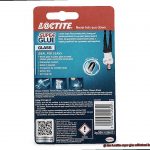Loctite, the adhesive superstar that holds our broken world together, has built an empire on its unwavering strength and reliability. From patching up leaky pipes to bonding metal with Herculean might, Loctite has become a household name synonymous with getting things done. But amidst the triumphs of this sticky wonder, a nagging question lingers: can Loctite ignite into a fiery inferno? In this blog post, we’re going to dive headfirst into the chemistry behind Loctite and uncover whether it’s a ticking time bomb or just another myth blown out of proportion. So buckle up and get ready for some explosive information as we explore the truth about whether Loctite can catch fire.
What is Loctite?
Contents

Loctite, a renowned brand of adhesive products, has revolutionized the world of bonding and sealing. From industrial professionals to automotive enthusiasts and DIY enthusiasts, Loctite offers a wide range of adhesives to meet diverse bonding needs. This article will delve into what Loctite is, its various types, and the benefits it provides.
Loctite is a brand of cyanoacrylate glue, commonly referred to as super glue. Its unique formula creates a strong and fast-acting bond between a variety of materials such as metals, plastics, rubber, wood, and ceramics. With its versatility and reliability, Loctite has become the go-to choice for professionals and homeowners alike.
Types of Loctite Adhesives:
- Instant Adhesives: Perfect for quick repairs and bonding tasks, these adhesives provide an instant bond within seconds. They come in liquid or gel form, offering users the flexibility to select the consistency that suits their specific application.
- Threadlockers: Designed to prevent loosening and leakage in threaded assemblies, threadlockers offer excellent resistance to vibration, impact, and chemicals. They are ideal for automotive and mechanical applications where reliability is crucial.
- Gasket Sealants: Loctite’s gasket sealants provide reliable sealing properties, preventing leaks and protecting against dust and moisture. Widely used in engine applications, plumbing systems, and machinery, they ensure long-lasting performance.
- Epoxy Adhesives: These adhesives consist of two components that need to be mixed before use. Epoxy adhesives offer high strength bonds and are suitable for materials with different coefficients of thermal expansion. They are particularly useful in demanding applications.
Benefits of Using Loctite:
- Strong and Durable Bonds: Loctite adhesives are formulated to provide long-lasting and robust bonds. They can withstand various environmental conditions, including temperature extremes, moisture, and chemicals.
- Ease of Use: Loctite adhesives require minimal preparation and can be applied directly to the surfaces to be bonded. In most cases, there is no need for primers or special surface treatments.
- Versatility: With Loctite, you can bond a wide range of materials, making it suitable for various applications. From household repairs to industrial projects, Loctite has got you covered.
- Safety Considerations: While Loctite itself is not flammable, certain types of products may contain volatile solvents that can be flammable. It is crucial to follow safety precautions, such as using the adhesive in well-ventilated areas away from open flames or sparks.
Is Loctite Flammable?
The flammability of Loctite, the superhero of adhesives, is a topic that requires careful consideration. It’s not a simple yes or no answer. To determine if Loctite is flammable, one must delve into the specific product variant being used.
Certain Loctite products are indeed flammable, while others are not. The key lies in understanding the formulation and ingredients of the adhesive. Flammable Loctite products typically contain volatile solvents that can ignite when exposed to an ignition source like an open flame or spark. Examples of these products include instant adhesives, threadlockers, and gasket sealants. While these solvents enhance the effectiveness of the adhesive, they also increase the risk of fire.
On the other hand, non-flammable Loctite products are formulated without volatile solvents. These adhesives are designed to be resistant to combustion, making them ideal for applications where fire safety is a concern, such as in the automotive or aerospace industries.
When using any flammable Loctite product, it is crucial to take proper safety precautions. Work in well-ventilated areas to minimize the concentration of potentially flammable vapors. Keep these products away from open flames or potential sources of ignition, and smoking near them is an absolute no-no.
Storage and handling are also critical factors in fire prevention. Flammable Loctite products should be stored in a cool, dry place away from heat sources and incompatible materials. If a fire occurs while using a flammable Loctite product, follow appropriate fire safety protocols such as using a suitable fire extinguisher or evacuating the area if necessary.

Potential Fire Hazards with Loctite
Today, we’re going to dive into the world of Loctite glue and uncover the potential fire hazards associated with this powerful adhesive superhero. So, buckle up and get ready for an informative and engaging journey.
Misuse and Mishandling – The Devil is in the Details:
Using Loctite glue is like wielding a superpower, but with great power comes great responsibility. One potential fire hazard is the misuse or mishandling of this adhesive wonder. Always follow the manufacturer’s instructions and use Loctite only as intended. Open flames and high temperatures are a big no-no when it comes to Loctite, as they can release flammable fumes.
Chemistry Clash – Beware of Reactivity:
Loctite’s compatibility with other materials is crucial to fire safety. Some chemicals or substances may react with Loctite, generating heat that can ignite a fire. In industrial settings where different substances are often used together, it becomes essential to be aware of potential reactions that could turn your adhesive adventure into a fiery disaster.
- Make sure to check the compatibility of Loctite with other materials before using it in combination.
- Conduct a small-scale test or consult with experts if unsure about the compatibility of Loctite with specific materials.
- Be cautious when using Loctite near reactive substances such as oxidizers or strong acids.
Storage Secrets – A Cool and Dry Haven:
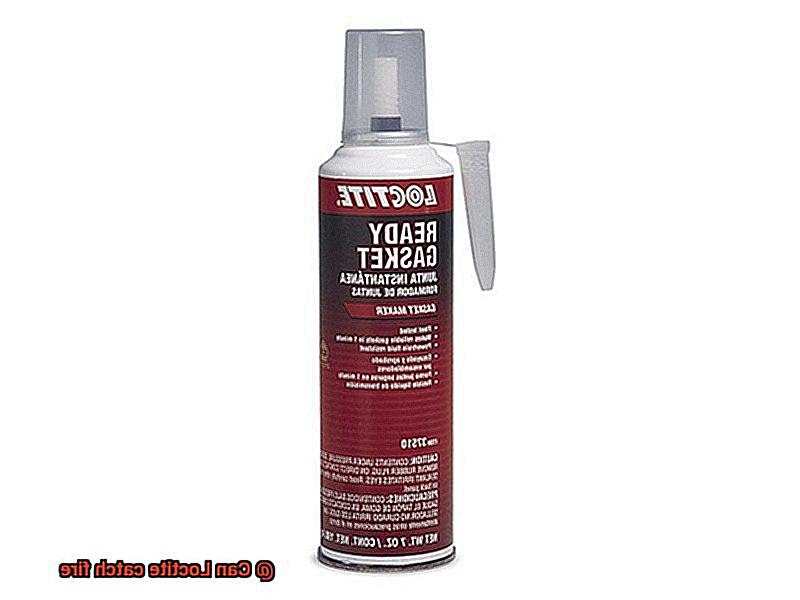
Proper storage is key. Keep your Loctite glue in a cool and dry place, away from sources of ignition or excessive heat. Extreme temperatures or direct sunlight can spell trouble for your adhesive superhero, increasing the risk of fire hazards.
- Store Loctite in a well-ventilated area away from direct sunlight.
- Avoid storing Loctite near electrical equipment that generates heat.
- Keep Loctite away from sources of ignition such as open flames, sparks, or hot surfaces.

Sparks and Flames – Keep Your Distance:
Loctite’s flammable vapors can be ignited by electrical equipment or sparks. So, keep your adhesive adventures away from potential ignition sources and always exercise caution when working in environments where sparks could turn your day from sticky to fiery.
- Maintain a safe distance between Loctite and potential ignition sources such as electrical equipment, open flames, or sparks.
- Use non-sparking tools and equipment when working with Loctite in potentially hazardous environments.
- Ensure proper ventilation to minimize the accumulation of flammable vapors.
Precautions to Take when Using Loctite
Let’s explore the necessary steps to ensure safety and successful results.
- Read and understand the instructions: It may seem like common sense, but always read and understand the instructions provided by the manufacturer. Following the instructions will ensure that you’re using the product correctly and taking all necessary precautions.
- Wear protective gear: When using Loctite, it’s essential to protect yourself. Wear gloves and safety glasses to shield your skin and eyes from any potential contact with the adhesive. Some Loctite products can emit strong odors, so wear a mask to avoid inhaling those fumes.
- Work in a well-ventilated area: Loctite products contain volatile compounds that can release fumes during application. To avoid feeling lightheaded or getting a little too high on glue fumes, make sure you’re working in a well-ventilated area. Open up those windows or use fans to improve air circulation.
- Proper storage: Keep your Loctite in a cool, dry place away from direct sunlight and heat sources. Tightly seal the containers to maintain the adhesive’s effectiveness and prevent any potential fire hazards.
- Avoid excessive application: Using more Loctite than necessary can increase the risk of flammability. Apply the adhesive only in the required amount as specified in the instructions. This will minimize the chances of fire and ensure proper bonding.
- Keep away from ignition sources: Loctite products are flammable, so keep them far away from open flames, sparks, or anything else that might ignite a firework show you didn’t sign up for. And sorry smokers, but no smoking around Loctite either.
- Clean up spills immediately: Accidents happen, right? If you spill some Loctite or have a little mishap, clean it up immediately. Don’t let it sit there, tempting fate. Use appropriate cleaning materials and dispose of them safely according to local regulations.
- Keep out of reach of children and pets: Children and pets can be curious, and the chemicals in these adhesives are not meant for playtime. Store your Loctite in a place that’s inaccessible to little hands and paws.
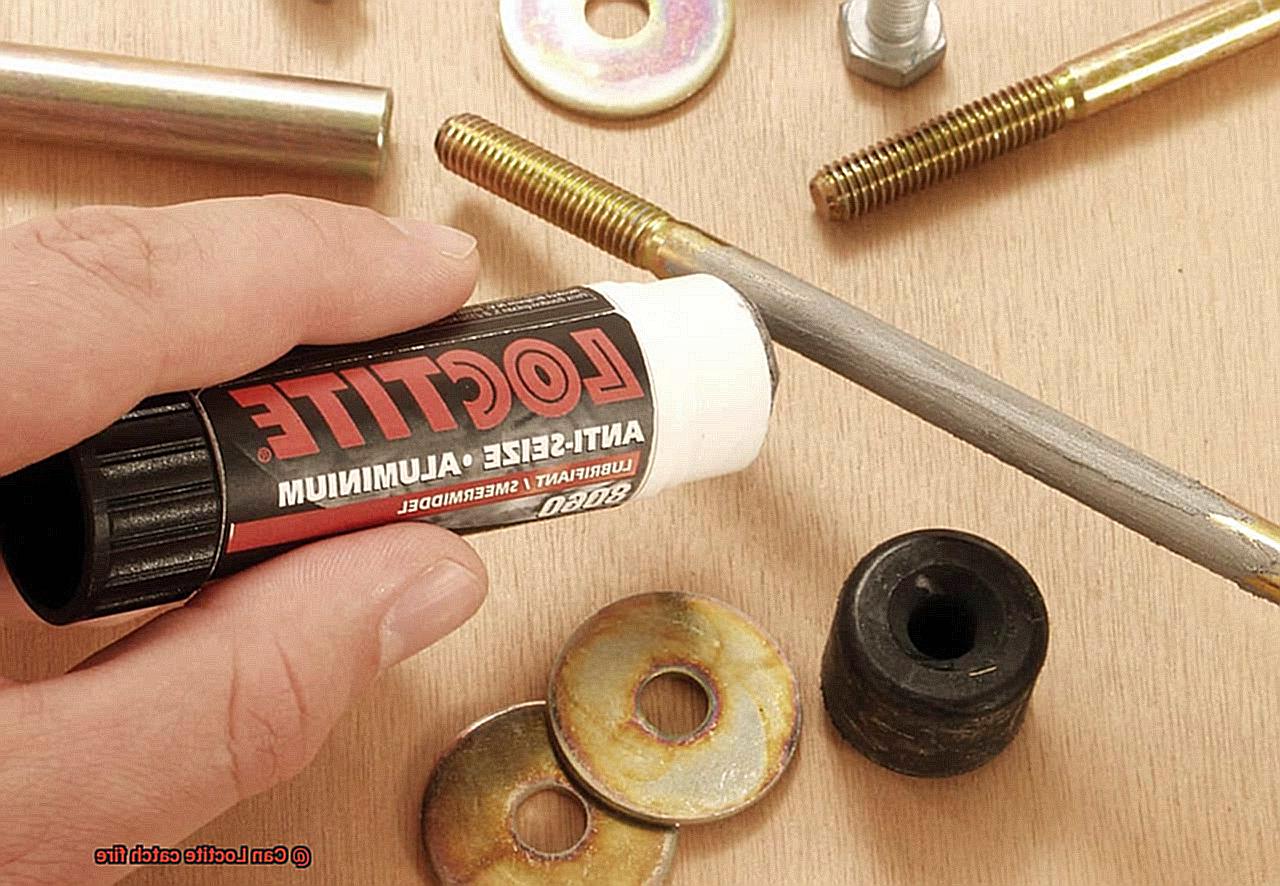
Types of High-Temperature Resistant Adhesives and Sealants
Today, we are going to take a deep dive into the captivating world of these extraordinary glues that defy scorching temperatures. So strap in and let’s embark on this thrilling journey.
Silicone-based Adhesives:
Picture a glue that can handle temperatures hotter than a boiling cauldron. That’s precisely what silicone-based adhesives can do. These incredible glues can withstand temperatures as high as 600 degrees Fahrenheit (315 degrees Celsius) or even higher. They are like the superheroes of the adhesive realm. Not only do they endure the heat, but they also bond to a diverse range of materials such as metal, glass, ceramics, and plastics.
Epoxy Adhesives:
Epoxy adhesives are renowned for their unmatched strength and durability. They too can endure high temperatures, up to 300 degrees Fahrenheit (150 degrees Celsius) or more. Imagine a glue as tough as steel. Epoxy adhesives are akin to the bodyguards of the adhesive family. They effortlessly bond metals, plastics, composites, and ceramics.
Polyurethane-based Adhesives:

While not as famous as silicone or epoxy, polyurethane-based adhesives pack a punch when it comes to heat resistance. These glues withstand temperatures ranging from 200 degrees Fahrenheit (93 degrees Celsius) to 300 degrees Fahrenheit (150 degrees Celsius). They are like flexible gymnasts in the adhesive world, bending and stretching without breaking. Polyurethane adhesives excel at bonding metals, plastics, wood, and even concrete.
Ceramic-based Adhesives:
Now let’s discuss the true superheroes of high-temperature resistance – ceramic-based adhesives. These glues can handle temperatures up to a scorching 2000 degrees Fahrenheit (1093 degrees Celsius) or higher. They are the firefighters of the adhesive family, always ready to battle in the hottest environments. Ceramic-based adhesives are perfect for bonding ceramics, glass, and metals in extreme heat conditions.
High-Temperature Resistant Sealants:
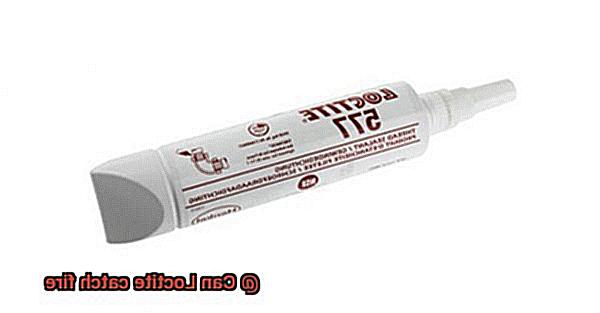
In addition to adhesives, there are also sealants that can withstand high temperatures. These sealants act as protective shields, safeguarding against air, dust, moisture, and other contaminants. They find common application in HVAC systems, automotive engines, and industrial equipment. Imagine a glue that doubles as a shield.
Proper Storage of Loctite Products
As we delve deeper into the realm of Loctite products, it becomes crucial to grasp the significance of proper storage. By adhering to a few simple guidelines, you can guarantee the safety and optimal performance of your Loctite products.
The Cool and Dry Rule:
Loctite products, like any adhesive or glue, are vulnerable to fire hazards. To avert mishaps, store them in a cool, dry haven, far away from heat sources and the scorching rays of sunlight. Extreme temperatures possess the power to compromise the stability and effectiveness of the product, and in some instances, may even ignite them.
Fire Safety First:
Steer clear of storing Loctite products near open flames or sparks. Remember, they possess flammability. Keep them at bay from potential ignition sources to mitigate the risk of fire.
Original Containers are Key:
Always house your Loctite products within their original containers, ensuring tightly-sealed lids. This practice thwarts evaporation and contamination, preserving the adhesive’s freshness and readiness for use when required.
Labeling and Organization:
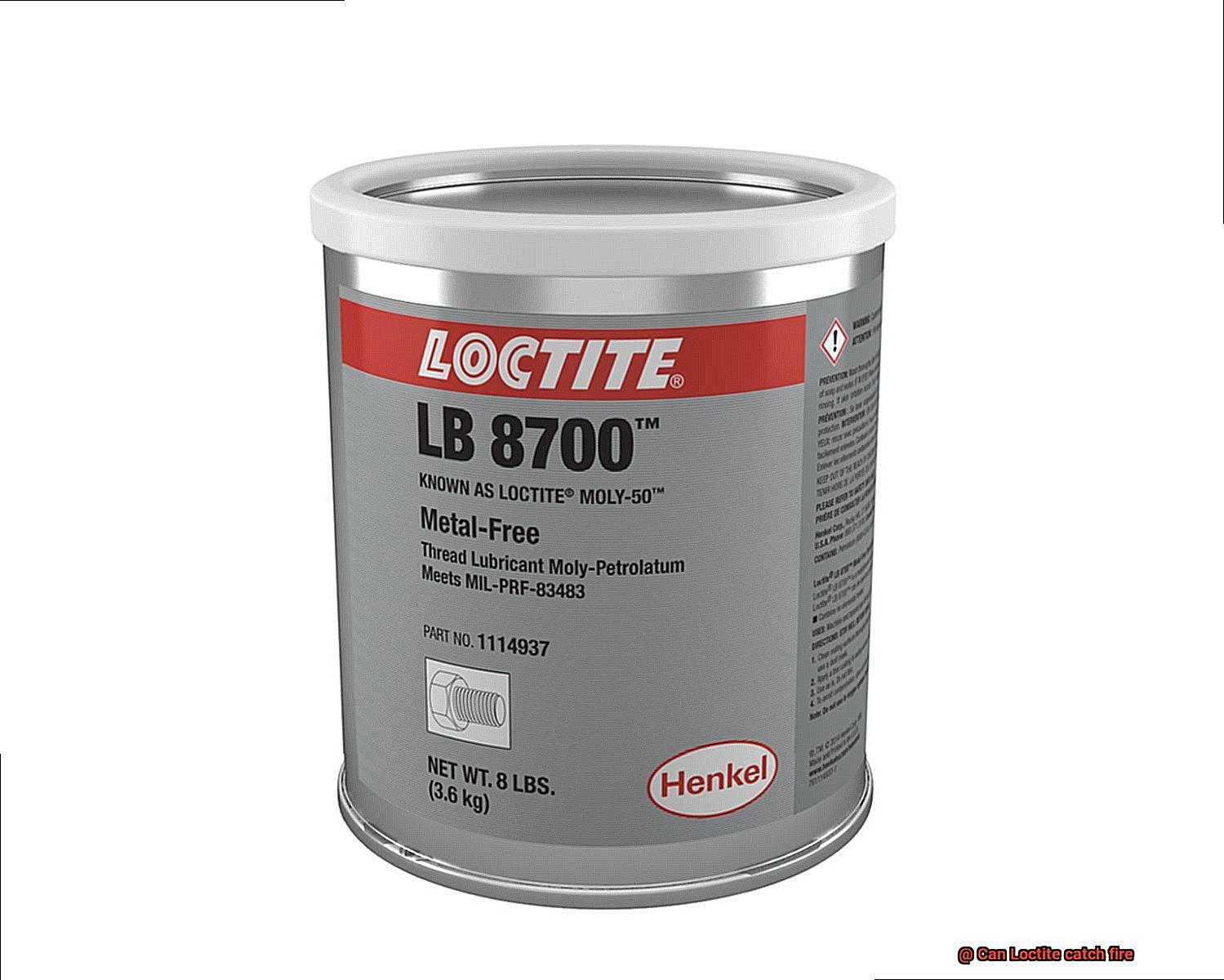
Skillfully label and organize your storage area to effortlessly distinguish between different types of Loctite products while avoiding mix-ups. Contemplate allocating a designated storage cabinet or shelf exclusively for Loctite products, effectively segregating them from other potentially hazardous substances.
Stay Vigilant:
Regularly inspect containers for signs of leakage or damage. If you detect any irregularities, refrain from employing the product and dispose of it responsibly in accordance with local regulations.
Time Matters:
Remain vigilant regarding expiration dates. It is essential to frequently verify the shelf life of your Loctite products and discard any that have surpassed their prime. This ensures that you perpetually work with fresh and dependable adhesives.
In Case of Emergency:
Should an inadvertent fire involving Loctite products arise, swiftly resort to appropriate fire suppression methods such as dry chemical extinguishers or water spray. Safety should perpetually reign supreme.
What to Do in the Event of an Accidental Fire Exposure
Accidents involving fire can be frightening and dangerous. It is crucial to know what steps to take in the event of an accidental fire exposure involving flammable adhesives like Loctite. This article will provide valuable information on how to handle such situations safely and minimize the potential harm.
Understanding the Flammability:
While Loctite itself is not flammable, certain formulations may contain volatile solvents that can be flammable. These solvents are added to assist in the application and drying process of the adhesive. It is important to be aware of this when using Loctite or any other flammable adhesive.
Prioritize Personal Safety:
In the event of a fire exposure, the first and most important step is to ensure personal safety. Immediately evacuate the area and ensure that everyone is out of harm’s way. Do not attempt to extinguish the fire unless you have received proper training and have access to appropriate firefighting equipment.
Call Emergency Services:
Once you are safely outside, call emergency services to report the fire. Provide them with accurate information about the location and nature of the incident, including the fact that a flammable adhesive like Loctite is involved. This will help them assess the potential risks and respond accordingly.
Avoid Inhaling Smoke or Fumes:
While waiting for emergency services to arrive, it is advisable to keep a safe distance from the fire and avoid inhaling any smoke or fumes. Seek fresh air if possible and cover your mouth and nose with a cloth or a mask to minimize exposure.
Provide Medical Attention:
If there are any individuals who have been directly exposed to the fire or the adhesive fumes, it is important to provide immediate medical attention. Rinse affected areas with cool water, apply burn ointments or bandages if necessary, and seek professional medical assistance as soon as possible.
Assess Damage and Prevent Future Incidents:
After the fire has been extinguished and the situation is deemed safe by authorities, assess the damage caused by the fire and take appropriate measures for cleanup and recovery. Investigate the cause of the fire and take steps to prevent similar incidents in the future, such as reviewing safety protocols, training employees on proper handling and storage of flammable materials, and implementing necessary precautions like adequate ventilation systems and fire-resistant storage containers.
Conclusion
In conclusion, it is essential to recognize that Loctite has the potential to catch fire.
This adhesive, although widely used and trusted for its bonding capabilities, contains flammable components that can ignite under certain conditions. Therefore, it is crucial to handle and store Loctite with caution, ensuring proper ventilation and keeping it away from open flames or sources of heat.
Ignoring these precautions can lead to disastrous consequences, including fires and injuries.






